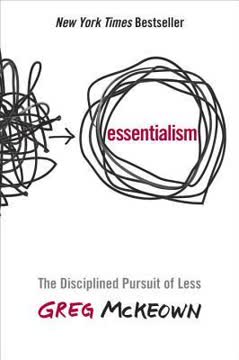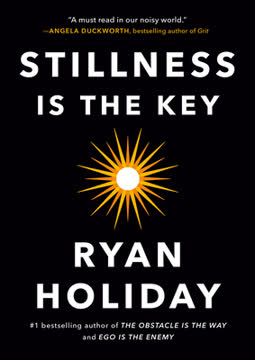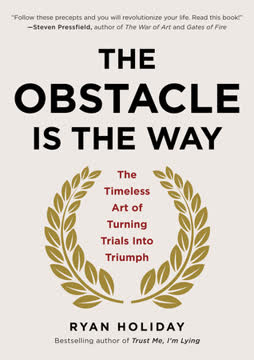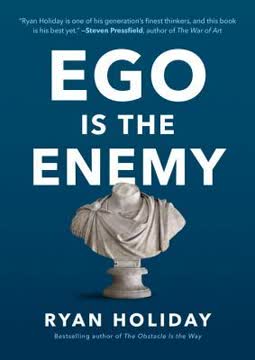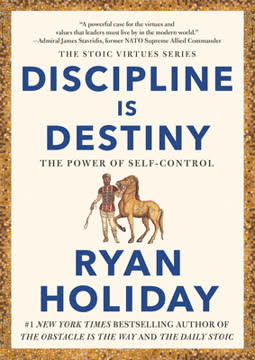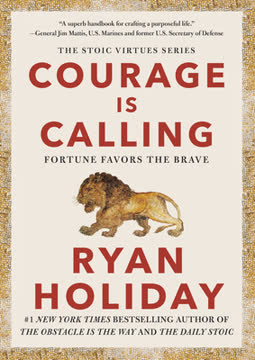重点摘要
1. 培养心灵的宁静以实现清晰和卓越
成为空虚就是与神圣合一——这是道。
宁静是力量。 在一个充满噪音和干扰的世界中,能够安静心灵是一种超能力。它可以带来更清晰的思考、更好的决策和增强的创造力。宁静不仅仅是身体的静止,而是一种心灵的平静和专注。
历史上有很多例子。 从约翰·肯尼迪在古巴导弹危机期间到老虎伍兹在高尔夫球场上,那些能够在压力下保持宁静的人往往能取得伟大的成就。这种技能通过冥想、正念和有意识的反思等实践来培养。
宁静的好处:
- 提高专注力和注意力
- 增强解决问题的能力
- 减少压力和焦虑
- 增强自我意识
- 更好的情绪调节
2. 限制输入并实践有意识的消费
如果你想进步,就要满足于在无关紧要的事情上显得无知或愚蠢。
信息过载是真实存在的。 在当今的数字时代,我们被来自无数来源的信息轰炸。这种不断的涌入会导致焦虑、犹豫不决和缺乏专注。通过有意识地限制我们的输入,我们可以为更深入的思考和与周围世界的更有意义的互动创造空间。
质量胜于数量。 有意识的消费意味着对我们允许进入大脑的东西进行选择。这不仅适用于信息,还适用于人际关系、承诺和物质财产。通过策划我们的输入,我们可以专注于真正重要的事情,并与我们的价值观和目标保持一致。
有意识消费的策略:
- 定期审查你的信息来源
- 进行数字排毒
- 设置社交媒体使用的界限
- 培养“少即是多”的心态
- 优先深度阅读而不是浅层浏览
3. 清空你的心灵以获得更深的洞察力
人是会思考的芦苇,但他伟大的作品是在他不计算和思考时完成的。
空虚的悖论。 一个充满思想和担忧的心灵往往难以产生创造性的洞察力或解决复杂的问题。通过学习清空我们的心灵,我们为新想法和更深的理解创造了空间。
禅与表现的艺术。 许多伟大的运动员、艺术家和思想家描述了他们在巅峰表现时的时刻,当时他们的心灵是清晰的,他们完全活在当下。这种“流动”或“进入状态”的状态通常是在我们放弃有意识的思考并让我们的直觉和训练接管时出现的。
清空心灵的技巧:
- 正念冥想
- 专注的呼吸练习
- 进行重复的身体活动(如散步、游泳)
- 练习不带评判的意识
- 沉浸在大自然中
4. 放慢速度并深入思考以做出更好的决策
只要思考。只要安静地思考。这将改变世界。
抵制匆忙的冲动。 在我们快节奏的世界中,常常有做出快速决策和立即行动的压力。然而,生活中许多重要的选择都受益于仔细的考虑和深入的反思。
思考的质量胜于速度。 通过放慢速度并给自己时间进行深入思考,我们通常可以得出更好的解决方案和更有洞察力的结论。这涉及抵制多任务处理或不断寻求新刺激的诱惑,而是为专注、不间断的思考创造空间。
深入思考的策略:
- 在日历中定期安排“思考时间”
- 练习“五个为什么”技术以探索根本原因
- 使用思维导图来可视化复杂问题
- 进行苏格拉底式提问以挑战假设
- 寻求多样化的观点以拓宽思维
5. 日记:自我反思和成长的强大工具
纸比人更有耐心。
写作澄清思维。 将思想写在纸上(或屏幕上)的行为有助于组织想法、处理情感并获得新的洞察力。写日记不仅仅是记录事件,而是与自己对话,可以带来个人成长和自我发现。
历史先例。 历史上许多伟大的思想家和领导者都写日记,从马可·奥勒留到安妮·弗兰克。这些写作通常揭示了杰出头脑的内在运作,并为后代提供了宝贵的教训。
写日记的好处:
- 增强自我意识
- 减轻压力和情感处理
- 设定和跟踪目标
- 提高解决问题和创造力
- 创建个人历史记录
6. 拥抱沉默以听到真正重要的声音
沉默是宇宙的普遍祝福。
安静的力量。 在一个充满噪音的世界中,沉默可能会让人感到不舒服甚至威胁。然而,往往在安静的时刻,我们可以最清晰地听到自己的想法并与更深的真理联系。
超越言语的倾听。 沉默不仅仅是声音的缺失,而是一种接受的状态。通过培养对沉默的舒适感,我们可以成为更好的倾听者——不仅对他人,也对自己的直觉和环境的微妙信息。
融入沉默的方法:
- 练习静默冥想
- 定期进行“无技术”休息
- 在没有干扰的情况下花时间在大自然中
- 在对话中多听少说
- 在家中或工作场所创造安静的空间
7. 通过持续学习和谦逊寻求智慧
我无法理解有些人如何能在不与地球上最聪明的人交流的情况下生活。
终身学习是关键。 真正的智慧不仅来自于积累知识,还来自于不断质疑、探索和保持对新思想的开放。这需要在对我们所知的自信和对我们所不知的谦逊之间找到平衡。
站在巨人的肩膀上。 通过与伟大思想家的思想交流——通过书籍、指导或学习——我们可以加速自己的成长并避免重新发明轮子。然而,这需要辨别力和将永恒智慧应用于现代背景的能力。
寻求智慧的实践:
- 广泛而深入地阅读各个学科
- 寻求导师和老师
- 定期进行自我反思
- 练习智力谦逊
- 通过现实世界的经验应用学习
8. 在自信与自我意识之间找到平衡
避免让你的自我与你的立场如此接近,以至于当你的立场倒下时,你的自我也随之倒下。
自信与自我。 真正的自信来自于自我意识和对自己能力的现实评估。而自我往往基于不安全感和对外部验证的需求。平衡这些力量对于个人成长和有效领导至关重要。
不受控制的自我的危险。 膨胀的自我会导致糟糕的决策、破坏关系并最终导致失败。通过培养自我意识并保持脚踏实地,我们可以保持自信而不陷入傲慢或自我欺骗的陷阱。
管理自我的策略:
- 定期进行自我反思
- 寻求可信来源的诚实反馈
- 庆祝他人的成功
- 承认错误并从中学习
- 专注于成长而不是证明自己
9. 放下执着以找到真正的自由
成为空虚就是与神圣合一——这是道。
通过不执着获得自由。 我们的许多挣扎来自于对财产、想法或结果的过度执着。通过学习放下,我们可以找到一种不依赖外部环境的更深层次的和平与自由。
控制的悖论。 通常,我们越是试图控制事情,就越感到失控。通过接受我们无法改变的事情并专注于自己的反应,我们可以在挑战中找到一种行动感。
放下的实践:
- 正念冥想
- 对你拥有的东西心存感激
- 定期清理物理和心理空间
- 专注于过程而不是结果
- 拥抱不确定性和变化
10. 征服愤怒以实现内心的平静和成功
人类所有的问题都源于人无法独自安静地坐在一个房间里。
愤怒作为破坏性力量。 虽然愤怒有时可以激励行动,但它往往会模糊判断并导致糟糕的决策。学习管理愤怒对于维持关系、做出明智的选择和保持内心的平静至关重要。
培养平静。 在面对挑战时保持冷静和平衡的能力是智慧和有效领导的标志。这并不意味着压抑情绪,而是培养有能力做出深思熟虑的回应而不是冲动反应。
愤怒管理的技巧:
- 练习正念和自我意识
- 使用呼吸练习来平静神经系统
- 培养同理心和换位思考的能力
- 定期进行体育锻炼
- 学习以坚定而非攻击性的方式沟通
最后更新日期:
FAQ
What's "Stillness Is the Key" about?
- Core Concept: "Stillness Is the Key" by Ryan Holiday explores the idea that achieving inner peace and clarity is essential for success and happiness. The book draws on historical figures and philosophical teachings to illustrate how stillness can be cultivated.
- Three Domains: The book is structured around three domains—mind, spirit, and body—each of which must be in harmony to achieve true stillness.
- Philosophical Blend: Holiday blends Eastern and Western philosophies, including Stoicism, Buddhism, and Christianity, to provide a comprehensive guide to finding stillness.
- Practical Advice: The book offers practical advice and strategies for reducing distractions, managing emotions, and maintaining focus in a chaotic world.
Why should I read "Stillness Is the Key"?
- Timeless Wisdom: The book distills wisdom from various philosophical traditions, making it relevant for anyone seeking personal growth and tranquility.
- Practical Application: It provides actionable strategies that can be applied in everyday life to improve mental clarity and emotional well-being.
- Inspiring Stories: Holiday uses historical examples and personal anecdotes to illustrate how stillness has been a key to success for many influential figures.
- Holistic Approach: The book addresses the mind, spirit, and body, offering a well-rounded approach to achieving inner peace.
What are the key takeaways of "Stillness Is the Key"?
- Mindfulness and Presence: Being fully present and mindful is crucial for achieving stillness and clarity in life.
- Limiting Inputs: Reducing distractions and unnecessary information is essential for maintaining focus and mental peace.
- Emotional Control: Managing emotions and desires is vital for spiritual stillness and personal growth.
- Physical Well-being: Taking care of the body through routine, rest, and leisure is necessary for overall stillness.
How does Ryan Holiday define stillness in "Stillness Is the Key"?
- Inner Peace: Stillness is described as a state of inner peace and clarity, where one is not disturbed by external chaos or internal turmoil.
- Mental Clarity: It involves having a clear and focused mind, free from unnecessary distractions and preoccupations.
- Emotional Balance: Stillness requires emotional control and the ability to manage desires and impulses.
- Physical Harmony: It also includes taking care of the body and maintaining a balanced lifestyle.
What are the best quotes from "Stillness Is the Key" and what do they mean?
- "The mind is restless, Krishna, impetuous, self-willed, hard to train: to master the mind seems as difficult as to master the mighty winds." This quote emphasizes the challenge of achieving mental stillness and the importance of discipline.
- "The essence of greatness is the perception that virtue is enough." It highlights the idea that true greatness comes from living a virtuous life, not from external achievements.
- "All profound things, and emotions of things are preceded and attended by Silence." This quote underscores the value of silence and solitude in understanding deeper truths.
- "To see people who will notice a need in the world and do something about it... Those are my heroes." It reflects the importance of taking action and making a positive impact in the world.
How does Ryan Holiday suggest achieving stillness of the mind?
- Be Present: Focus on being fully present in the moment and avoid dwelling on the past or worrying about the future.
- Limit Inputs: Reduce the amount of information and distractions you consume to maintain mental clarity.
- Empty the Mind: Practice techniques to clear your mind of unnecessary thoughts and preoccupations.
- Seek Wisdom: Continuously seek knowledge and wisdom to guide your thoughts and actions.
What advice does "Stillness Is the Key" offer for achieving spiritual stillness?
- Cultivate Virtue: Live a life guided by moral and civic excellence to achieve spiritual peace.
- Heal Inner Wounds: Address and heal emotional wounds from the past to prevent them from affecting your present.
- Beware of Desires: Recognize and manage desires and impulses that can disturb your inner peace.
- Embrace Gratitude: Practice gratitude and appreciation for the world around you to cultivate a content and peaceful spirit.
How does "Stillness Is the Key" address the importance of physical well-being?
- Routine and Discipline: Establish a disciplined routine to maintain physical health and support mental clarity.
- Rest and Leisure: Prioritize rest and leisure activities to recharge and rejuvenate the body and mind.
- Solitude and Nature: Spend time in solitude and nature to gain perspective and connect with the world around you.
- Balance and Moderation: Practice moderation in all aspects of life to maintain physical and mental balance.
What role do historical figures play in "Stillness Is the Key"?
- Illustrative Examples: Historical figures are used to illustrate how stillness has been a key to success and greatness throughout history.
- Diverse Backgrounds: The book draws on a wide range of individuals, from philosophers to athletes, to show the universal applicability of stillness.
- Lessons Learned: Each story provides lessons on how these figures achieved stillness and how readers can apply these lessons in their own lives.
- Inspiration and Motivation: The stories serve as inspiration and motivation for readers to pursue stillness in their own lives.
How does Ryan Holiday incorporate Eastern and Western philosophies in "Stillness Is the Key"?
- Blended Approach: Holiday blends teachings from Stoicism, Buddhism, Christianity, and other traditions to provide a comprehensive guide to stillness.
- Universal Principles: He highlights universal principles, such as mindfulness, virtue, and balance, that are common across these philosophies.
- Practical Application: The book offers practical advice drawn from these traditions that can be applied in modern life.
- Cultural Insights: Holiday provides cultural insights and historical context to enrich the reader's understanding of these philosophies.
What is the significance of the three domains—mind, spirit, and body—in "Stillness Is the Key"?
- Holistic Approach: The three domains represent a holistic approach to achieving stillness, addressing mental, spiritual, and physical aspects of life.
- Interconnectedness: Each domain is interconnected, and harmony among them is essential for true stillness and peace.
- Comprehensive Guide: The book provides guidance and strategies for cultivating stillness in each domain, offering a well-rounded approach to personal growth.
- Balanced Life: By focusing on all three domains, readers can achieve a balanced and fulfilling life.
How can "Stillness Is the Key" help in managing modern life's chaos?
- Practical Strategies: The book offers practical strategies for reducing distractions, managing emotions, and maintaining focus in a chaotic world.
- Mindful Living: It encourages mindful living and being present, which can help reduce stress and improve mental clarity.
- Emotional Control: By managing desires and impulses, readers can achieve emotional balance and reduce inner turmoil.
- Physical Well-being: The book emphasizes the importance of physical well-being and routine in supporting mental and spiritual health.
评论
《宁静是关键》因其在现代生活中寻找平静和专注的见解而获得了大多数积极评价。读者们欣赏霍利迪使用历史实例和哲学概念,特别是斯多葛主义。许多人认为书中的建议实用且鼓舞人心,尽管有些人批评其内容重复或基础。书籍的结构涵盖了心灵、精神和身体,令许多读者产生共鸣。一些评论者指出,尽管书中内容并非突破性,但它作为一个宝贵的提醒,提醒人们放慢脚步,培养内心的平静。
The Way, The Enemy, and The Key Series
Similar Books





